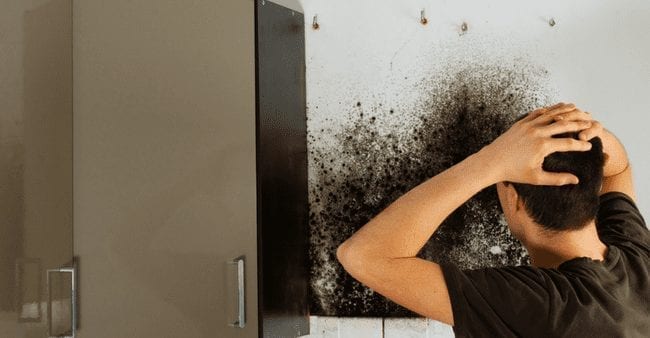They are making several great observations on the subject of Finding hidden leaks as a whole in this post further down.

Early detection of dripping water lines can minimize a potential disaster. Some little water leaks may not be noticeable.
1. Take A Look At the Water Meter
Every house has a water meter. Checking it is a surefire way that helps you find leakages. For beginners, shut off all the water sources. Make sure no person will certainly purge, utilize the faucet, shower, run the washing maker or dishwasher. From there, go to the meter and watch if it will change. Since no person is utilizing it, there should be no motions. If it moves, that suggests a fast-moving leakage. Likewise, if you detect no changes, wait a hr or 2 and examine back once again. This means you may have a slow-moving leak that might also be below ground.
2. Inspect Water Usage
Assess your water costs as well as track your water intake. As the one paying it, you ought to see if there are any type of disparities. If you find sudden changes, regardless of your consumption coinciding, it suggests that you have leakages in your plumbing system. Remember, your water bill ought to drop under the exact same range on a monthly basis. An unexpected spike in your expense shows a fast-moving leak.
Meanwhile, a constant increase each month, despite having the same practices, reveals you have a slow-moving leakage that's additionally slowly escalating. Call a plumber to thoroughly check your residential property, especially if you feel a warm location on your floor with piping below.
3. Do a Food Coloring Examination
30% comes from bathrooms when it comes to water consumption. Examination to see if they are running appropriately. Decrease flecks of food shade in the tank and also wait 10 minutes. There's a leak between the storage tank and bowl if the color somehow infiltrates your dish throughout that time without flushing.
4. Asses Outside Lines
Don't neglect to check your outside water lines too. Ought to water leak out of the connection, you have a loosened rubber gasket. One small leak can waste lots of water and also increase your water bill.
5. Evaluate as well as Assess the Circumstance
Home owners ought to make it a routine to inspect under the sink counters and even inside cabinets for any type of bad odor or mold development. These two red flags indicate a leak so timely attention is needed. Doing routine assessments, also bi-annually, can save you from a major problem.
Examine for stainings and compromising as most appliances and also pipelines have a life span. If you presume leaking water lines in your plumbing system, do not wait for it to escalate.
Early detection of dripping water lines can reduce a prospective disaster. Some small water leaks may not be visible. Examining it is a guaranteed means that helps you uncover leakages. One little leakage can lose bunches of water and also surge your water costs.
If you think leaking water lines in your plumbing system, do not wait for it to intensify.
How to Know If Your Home Has a Hidden Leak
Water Meter Reveals Inexplicable Water Usage
If you’d like to test whether or not there’s a leak somewhere in your home, you can do this using your water meter. Here is how to conduct the test:
Don’t use any water in your home for at least 30 minutes; this also means not turning on faucets or water-using appliances.
Go outside, and check your water meter for activity.
If your water meter shows that there was activity, even though no one was using any water, this proves that there is a leak in your home.Visible Mold or Mildew Growth
Leaks behind walls create moist, dark environments that allow mold and mildew to grow and thrive. Eventually, you might see mold growth forming on the wall closest to a hidden leak.
If mold is growing in an area that receives a high amount of moisture, such as a bathroom, it may simply be an indication that better ventilation is needed. However, if you see mold growth on a wall or the ceiling in an area where you would not expect, you probably have a hidden leak.
Musty, Mildew Odor
Sometimes you might not be able to see the mold or mildew that is growing as a result of a leak. However, the smell can give the problem away just as easily. If you catch a whiff of something musty, there’s a good chance that old water is collecting somewhere in your home that you can’t see.
Stained/Warped Walls, Ceilings, or Floors
When your home soaks up water, a variety of red flags can become visible, including ceiling stains, bubbling drywall, warped walls, and sagging floors. While these issues can be caused by excess humidity, they can also be signs that a pipe or plumbing connection has started leaking behind your walls.
Inexplicably High Water Bill
After a while, you get a general sense for what your water bill should be. If you own a pool or sprinkler system, your bill will tend to be higher during summer. However, if you receive a water bill that seems especially high, and you can’t figure out what caused it, then you may have a hidden leak somewhere that’s increasing your bill.
https://www.plumbingjoint.com/blog/2019/july/how-to-know-if-your-home-has-a-hidden-leak/

We are very eager about Hacks to detect leaks and I am assuming you appreciated our blog post. Liked our blog entry? Please share it. Let somebody else find it. Kudos for your time. Kindly come visit our blog back soon.